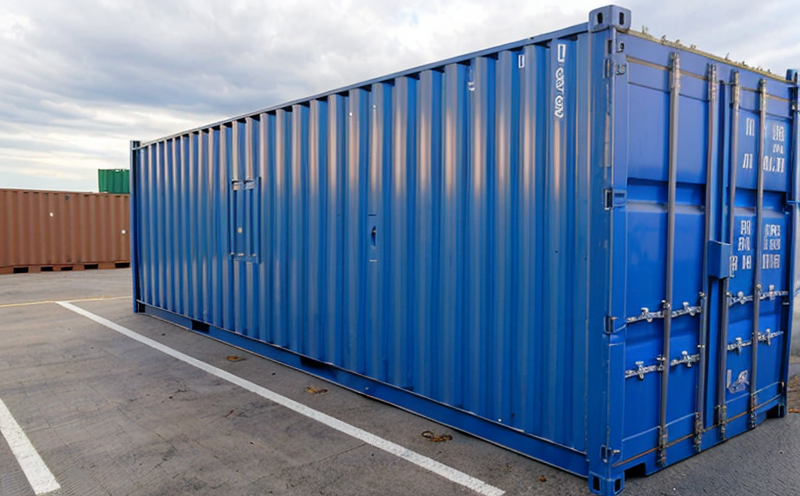ASTM F1249 WVTR Testing of Plastic Storage Films
The testing of plastic storage films to determine their water vapor transmission rate (WVTR) is critical for the quality control and development processes in industries that rely on packaging materials. ASTM F1249, a widely recognized standard, provides a precise method for measuring WVTR. This service ensures that the integrity and performance of plastic storage containers meet stringent requirements.
The process begins with selecting appropriate samples from production batches or prototypes. The specimens are cut into specific sizes to ensure uniformity and consistency in testing results. Once prepared, they are placed within a controlled environment chamber where the WVTR is measured over time using ASTM F1249 techniques. This method involves exposing the sample to defined humidity levels while maintaining constant temperature conditions.
The testing apparatus used adheres strictly to ASTM F1249 specifications, which include calibrated chambers and sensors that monitor relative humidity and temperature accurately. The procedure ensures minimal external variables affecting the test outcome, thus providing reliable data on how well the plastic film resists moisture penetration. This information is essential for optimizing packaging designs and ensuring product shelf life.
Following successful completion of ASTM F1249 testing, detailed reports are generated summarizing all findings including transmission rates at different humidity levels. These reports serve multiple purposes such as informing quality assurance teams about potential issues early in the manufacturing process or guiding research and development efforts towards improving material properties.
In summary, ASTM F1249 WVTR Testing plays a pivotal role in ensuring that plastic storage films meet industry standards regarding their ability to protect contents from moisture damage. This service supports various sectors including pharmaceuticals, food & beverage, electronics manufacturing among others where reliable packaging solutions are paramount for maintaining product quality throughout distribution channels.
Why It Matters
The significance of ASTM F1249 WVTR testing extends beyond mere compliance; it directly impacts the longevity, safety, and overall performance of plastic storage containers across various industries. For instance, in pharmaceutical packaging, ensuring proper moisture barrier properties can prevent degradation of sensitive medications before they reach consumers.
In food & beverage applications, maintaining an effective seal prevents contamination from external elements like air or water vapor that could alter product quality or freshness. Similarly, for electronics manufacturing, protecting components within enclosures requires robust barriers against environmental factors which might otherwise compromise functionality.
By adhering to ASTM F1249 standards during production and quality assurance stages, manufacturers can enhance their reputation by delivering consistently high-quality products that meet regulatory requirements while also addressing customer expectations regarding reliability and durability. Moreover, this testing contributes significantly towards reducing waste associated with subpar packaging materials which ultimately leads to cost savings for businesses.
Environmental and Sustainability Contributions
ASTM F1249 WVTR testing plays a crucial role in promoting environmental sustainability by facilitating the development of more efficient, eco-friendly packaging solutions. By optimizing moisture barrier properties through this testing process, manufacturers can reduce the amount of material needed for effective protection without compromising on performance.
This approach not only decreases raw material consumption but also reduces energy usage associated with manufacturing processes such as heating chambers or cooling systems designed to maintain optimal conditions during testing. Additionally, improved packaging design based on rigorous ASTM F1249 evaluations helps minimize waste generation throughout the lifecycle of products packaged within these containers.
Furthermore, by ensuring that storage films are capable of maintaining product integrity over extended periods without requiring frequent replacements or additional protective layers, businesses contribute positively towards reducing landfill contributions from discarded packaging materials. This aligns with broader sustainability goals aimed at fostering a circular economy where resources are used efficiently and responsibly.
Competitive Advantage and Market Impact
The ability to accurately measure WVTR using ASTM F1249 testing offers significant competitive advantages in today’s marketplace. Companies that invest in this service can stay ahead of competitors by consistently delivering superior product quality and reliability.
With increasing consumer awareness regarding food safety, environmental impact, and overall well-being, businesses offering transparently reliable packaging solutions are likely to gain market share over those perceived as less trustworthy or environmentally conscious. By leveraging ASTM F1249 WVTR testing results in their marketing strategies, companies can effectively communicate the robustness of their products’ protective capabilities.
The data obtained from these tests also provides valuable insights for continuous improvement initiatives within R&D departments. It enables them to identify areas where current packaging designs could be enhanced further or alternative materials explored that offer even better performance characteristics. Such innovations not only enhance brand reputation but also open up new market opportunities by differentiating offerings based on advanced technology and sustainability practices.
In conclusion, incorporating ASTM F1249 WVTR testing into business operations is more than just a compliance requirement; it represents an investment in long-term success through enhanced product quality, improved operational efficiency, and sustainable growth strategies aligned with global trends towards responsible consumption patterns.





